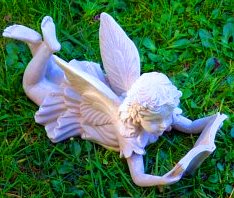Shampoo Bar FAQ
When did people start using shampoo?
Before the 20th century, products for washing the hair were primarily based on soap, herbs and scented waters. The detergents used in shampoos today were only invented during World War II, so soap for washing the hair is not a new idea but the widespread availability of raw materials from all over the globe, the free exchange of information online and a better understanding of soap chemistry has made it possible for artisan soapmakers to formulate better products than ever before. The soap used by our great-grandmothers to wash their hair is a far cry from today’s shampoo bars!
What is the difference between a shampoo bar and liquid shampoo?
Why are shampoo bars popular now?
There are more artisan soapmakers than ever before who make innovative products. The big companies are following their lead and promoting shampoo bars. People are talking about them on blogs and forums. There is a desire for a more “natural” product and simplicity. More people are concerned about the environment and look for products with minimal packaging. Some customers have had better results with shampoo bars than with their old shampoos. Shampoo bars are now my best-selling item.
Why would I want to switch to a shampoo bar?
The reason many people have switched to using my product is they wanted to avoid the SLS and SLES that is present in commercial shampoos. (But do check the label – as I mentioned above, there is a type of shampoo bar that does contain these ingredients).
Beyond that, I believe there are several other good reasons to switch: Ease of use, less expensive, easily portable (no TSA hassles at airport security!), effective, minimal packaging. In short, anyone who is willing to try something new and wants to simplify their hair care routine while also probably saving some money might want to consider trying a shampoo bar! Would you recommend shampoo bars for infants?
No, I would not recommend them for children or babies because of the possibility of soap getting into the eyes which, as everyone knows, is unpleasant.
How does it work? How do I use it?
Do I still need a conditioner?
You can use your regular conditioner after washing your hair with a shampoo bar, but an alternative method would be to use a small amount of good hair oil (coconut, argan, etc.), like the Herbal Hair Oil that I make.
How do I choose a good shampoo bar?
The ingredients should be clearly listed, in descending order of quantity. Buy from a trusted source or find a local soapmaker with whom you can discuss the product and get a feel for their level of expertise. Be skeptical of anyone who makes medical claims, or advertises that a shampoo bar will restore color to gray hair!
Tell me about your shampoo bar!
My own experience with shampoo bars started a few years ago when I tried a commercial variety bought at a health food store. I thought it left my hair dry and decided that I didn’t like shampoo bars. On the basis of that experience, I resisted my customers’ requests to make a shampoo bar for quite a while. Finally, I decided to experiment with it and when I had one that I thought was good, I made my husband test it first! He loved it and so now we’ve both been using it for about 3 years and it’s become one of my best-selling soaps. It starts with a water extract of marshmallow herb root (Althea officianalis). The oils that I use are olive, castor, and coconut, with a generous amount of shea butter. I add honey, which gives the soap a yellow/light brown color and increases the lather, dissolved silk and Moroccan argan oil. It is lightly scented with the essential oils of lavender, orange peel, rosemary and Ylang ylang, so it’s very fresh and unisex.
|
|
Mystic Water Soap™
4716 Riverdale Rd. Riverdale Park, MD 20737 Tel: 240-828-5833 Email: [email protected] This site for men: http://mystic4men.com General website: http://mysticwatersoap.com |
None of my products are intended for the treatment of any medical condition. Please read labels carefully to avoid any known allergens and discontinue use immediately if any irritation occurs.
|
_
Copyright © 2007-2024 All rights reserved Updated January 2024
Copyright © 2007-2024 All rights reserved Updated January 2024


